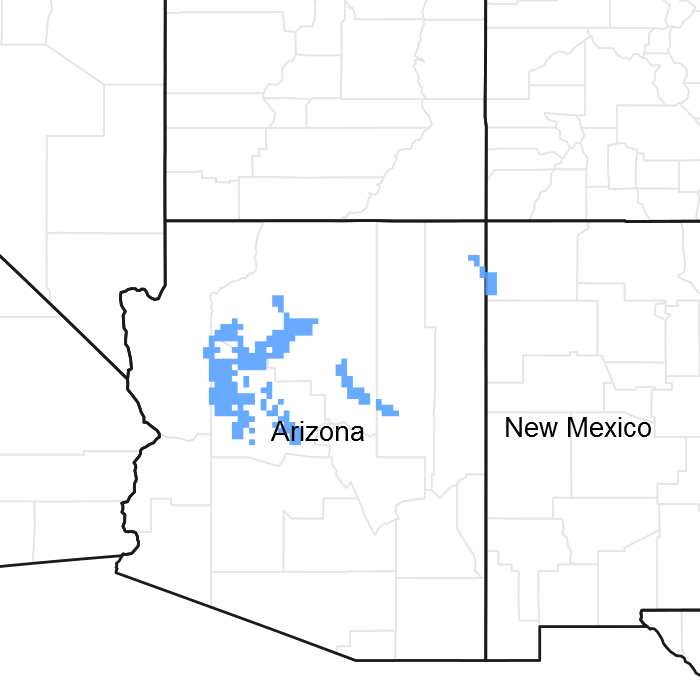Ecological dynamics
The plant communities found on an ecological site are naturally variable. Composition and production will vary with yearly conditions, location, aspect, and the natural variability of the soils. The Reference Plant Community represents the natural potential plant communities found on relict or relatively undisturbed sites. Other plant communities described here represent plant communities that are known to occur when the site is disturbed by factors such as fire, grazing, or drought.
Production data provided in this site description is standardized to air dry weight at the end of the summer growing season. The plant communities described in this site description are based on near normal rainfall years.
NRCS uses a Similarity Index to compare existing plant communities to the plant communities described here. Similarity index is determined by comparing the production and composition of a plant community to the production and composition of a plant community described in this site description. To determine Similarity index, compare the production (air dry weight) of each species to that shown in the plant community description. For each species, count no more than the maximum amount shown for the species, and for each group, count no more than the maximum amount shown for each group. Divide the resulting total by the total normal year production shown in the plant community description. If the rainfall has ben significantly above or below normal, use the total production shown for above or below normal years. If field data is not collected at the end of the summer growing season, then the field data must be corrected to the end of the year production before comparing it to the site description. The growth curve can be used as a guide for estimating production at the end of the summer growing season.
State 1
Reference State
This state represents the most ecologically stable conditions in terms of resistance to erosion. Moreover, this state has the highest potential for productivity and plant diversity.
Community 1.1
Grassland with Mixed Shrubs (reference plant community)
This phase is a grassland with mixed shrubs.
Community 1.2
Mixed Shrubs with Grasses
This phase is shrub-dominated, but also includes grasses.
Community 1.3
Pinyon and Juniper Invasion
This phase contains significant amounts of pinyon and juniper.
Pathway P1.1A
Community 1.1 to 1.2
Excessive grazing and/or drought.
Excessive grazing can be specified here as: Season-long grazing providing little rest and recovery for preferred grazed plants during critical growing periods, coupled with high utilization.
Pathway P1.1B
Community 1.1 to 1.3
Removal of fire
Pathway P1.2A
Community 1.2 to 1.1
Improved grazing management and return to normal precipitation
Pathway P1.2B
Community 1.2 to 1.3
Removal of fire
Pathway P1.3A
Community 1.3 to 1.1
Reintroduction of fire
Pathway P1.3B
Community 1.3 to 1.2
Reintroduction of fire
State 2
Non-Native Annuals
This state includes non-native annuals.
Community 2.1
Grassland with Mixed Shrubs and Non-Native Annuals
Community 2.2
Mixed Shrubs with Grasses and Non-Native Annuals
Community 2.3
Pinyon and Juniper Invasion with Non-Native Annuals
Pathway P2.1A
Community 2.1 to 2.2
Excessive grazing and/or drought.
Excessive grazing can be specified here as: Season-long grazing providing little rest and recovery for preferred grazed plants during critical growing periods, coupled with high utilization.
Pathway P2.1B
Community 2.1 to 2.3
Removal of fire
Pathway P2.2A
Community 2.2 to 2.1
Improved grazing management and return to normal precipitation
Pathway P2.2B
Community 2.2 to 2.3
Removal of fire
Pathway P2.3A
Community 2.3 to 2.1
Reintroduction of fire
Pathway P2.3B
Community 2.3 to 2.2
Reintroduction of fire
State 3
Savanna
This state is characterized by a well-established cohort of trees.
Community 3.1
Grassland with Mixed Shrubs with Excessive Tree Cover
Community 3.2
Mixed Shrubs with Grasses with Excessive Tree Cover
Pathway P3.1A
Community 3.1 to 3.2
Excessive grazing and/or drought
Excessive grazing can be specified here as: Season-long grazing providing little rest and recovery for preferred grazed plants during critical growing periods, coupled with high utilization.
Pathway P3.2A
Community 3.2 to 3.1
Improved grazing management and/or return of normal precipitation
State 4
Savanna with Non-Native Annuals
Community 4.1
Grassland with Mixed Shrubs with Non-Native Annuals and Excessive Tree Cover
Community 4.2
Mixed Shrubs with Grasses with Non-Native Annuals with Excessive Tree Cover
Pathway P4.1A
Community 4.1 to 4.2
Excessive grazing and/or drought.
Excessive grazing can be specified here as: Season-long grazing providing little rest and recovery for preferred grazed plants during critical growing periods, coupled with high utilization.
Pathway P4.1B
Community 4.2 to 4.1
Improved grazing management and/or return to normal precipitation
Transition T1A
State 1 to 2
Introduction of non-native annuals
Transition T1B
State 1 to 3
Long term removal of fire
Transition T1C
State 1 to 4
Introduction of non-native annuals with long term removal of fire
Transition T2A
State 2 to 4
Long term removal of fire
Restoration pathway R3A
State 3 to 1
Reintroduction of fire
Restoration pathway R3B
State 3 to 2
Reintroduction of fire with simultaneous introduction of non-native annuals
Transition T3A
State 3 to 4
Introduction of non-native annuals
Restoration pathway R4A
State 4 to 2
Reintroduction of fire

